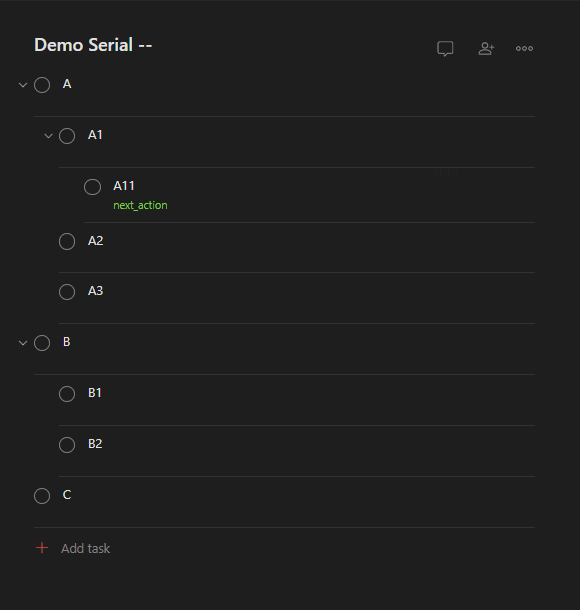|
|
||
|---|---|---|
| .gitignore | ||
| LICENSE | ||
| Procfile | ||
| README.md | ||
| autodoist.py | ||
| requirements.txt | ||
| setup.py | ||
README.md
Autodoist
This program adds two major functionalities to Todoist to help automate your workflow:
- Assign automatic
@next_actionlabels for a more GTD-like workflow - Enable re-use of subtasks in lists with a recursive date
Requirements
- Python 3.8
todoist-pythonpackage.
Automatic next action labels
The program looks for pre-defined tags in every list and parentless task in your Todoist account to automatically add and remove @next_action labels. The result will be a clear, current and comprehensive list of next actions without the need for further thought.
Projects and parentless tasks can be tagged independently from each other to create the required functionality.
Todoist Premium is required to function properly. Make sure the label exists in your Todoist before running the program.
Sequential list processing
If a project or parentless task ends with --, the sub-tasks will be treated as a priority queue and the most important will be labeled @next_action. Importance is determined by order in the list.
Parallel list processing
If a project or parentless task name ends with //, the sub-tasks will be treated as parallel @next_actions.
A waterfall processing is applied, where the lowest possible sub-tasks are labelled.
Parentless tasks
Any parentless task can be be given a type by appending // or -- to the name of the task. This works if there is no project type, and will override a previously defined project type.
See example 1 with a parallel project
See example 2 with a serial project
Recurring lists
The program looks for all parentless tasks with a recursive date. If they contain sub-tasks, they will be restored in the same order when the parentless task is checked.
Executing Autodoist
You can run Autodoist from any system that supports Python.
Running Autodoist
Autodoist will read your environment to retrieve your Todoist API key, so to run on Windows/Linux/Mac OSX you can use the following commandline:
python autodoist.py -a <API Key>
If you want to enable recursive-mode, run with the -r argument:
python autodoist.py -a <API Key> -r
Additional arguments
Several arguments can be provided, for example to change the default label:
python autodoist.py -l <label>
Or to change the suffix tags:
python autodoist.py --parallel_suffix <tag>
python autodoist.py --serial_suffix <tag>
In addition, if you experience issues with syncing you can change the api syncing time (default 10 seconds):
python autodoist.py --delay <time in seconds>
For all arguments check help:
python autodoist.py --help


